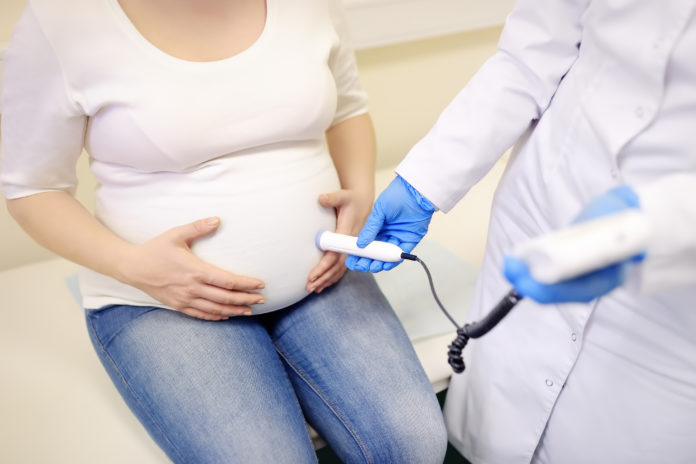The amniotic sac is like a bag, filled with amniotic fluid in which the baby rests. The amniotic fluid is meant to protect the baby from sudden movements. The glue which keeps the amniotic sac and uterus attached is a protein known as fibronectin. If the glue wears off, the amniotic sac can get detached. This detachment is necessary by the expected delivery date. But what if this happens earlier? The medical term for this condition is known as preterm labor. And if there’s any chance of preterm labor, you can find fibronectin in the cervix. This is the basis of the fetal fibronectin test.
Why is a fetal fibronectin test done?
This test is essential to eliminate the risk of preterm labor. Your doctor might ask you to take the test if he or she suspects any symptoms which could possibly lead to preterm labor.
What are the indications of fetal fibronectin test?
Your doctor usually won’t ask you to perform the fetal fibronectin test until and unless he suspects a chance of preterm labor. The symptoms include:
- Abdominal pain
- Backache
- Cramps
- Change in vaginal discharge
- Dilatation (opening) of the cervix and neck of the uterus
- Pain which indicates uterine contractions
The test is also performed if the mother belongs to the high-risk groups for premature birth. The high-risk groups include:
- Mother with a past history of preterm delivery.
- Mother with any history of uterine or cervical surgeries in the past; such surgeries often involve the muscles of the uterus that can lead to its weakening. This increases the risk of preterm labor.
- Lifestyle factors like smoking during pregnancy increases the risk of preterm labor.
- Low pre-pregnancy weight
- Mothers with a short cervix
- A short gap between consecutive pregnancies: WHO recommends at least a 24-month gap between two consecutive pregnancies. This is the time taken by the mother’s body to recover from the first pregnancy.
- Vaginal bleeding during pregnancy
How should I prepare myself for the fetal fibronectin test?
There are certain dos and don’ts you need to observe before going for a fetal fibronectin test. These are important because not following these could lead to a false-positive test that could mislead your doctor’s diagnosis. Do not do the following within 24 hours before the test:
- Sexual intercourse
- Vaginal bleeding
- Pelvic examination
- Transvaginal ultrasound
- Use of products such as lubricants, soaps, lotions, etc.
- Applying any medications in your vagina.
What is the procedure of the test?
- You’ll be asked to lie down on your back on the examination table.
- Your doctor will place a speculum in your vagina.
- And insert a long, thin cotton swab to collect secretions near your cervix.
- The swab is then sent to the laboratory for analysis.
Sometimes, the fetal fibronectin test is followed by a transvaginal ultrasound. This is done to measure the length of the mother’s cervix. A short cervix is a risk factor for premature birth. This is done after the fetal fibronectin test because doing it before the fetal test can lead to false-positive results.
What are the results of the fetal fibronectin test?
- Positive: This means fibronectin inside your uterus is weakening. This is a sign that the mother is at an increased risk of premature delivery. Specifically, if the test comes out to be positive within 22 to 34 weeks of pregnancy then the mother is likely to deliver within seven days. In such cases, your doctor braces for the complications of premature birth.
- Negative: If the fetal fibronectin test is negative, that means the glue between the mother’s uterus and the amniotic sac is still working. And there are no risks of premature delivery. Your doctor will continue with some routine examinations to avert any other complications.
Conclusion
Fetal fibronectin test is a very simple yet effective test to check whether the mother is at any risk of preterm labor. If you’re asked to take one, stay confident and abide by the dos and don’ts before going in for a test. If tested negative, well and good. If positive, do not worry and follow your doctor’s instructions.
Call 1860-500-1066 to book an appointment
Frequently Asked Questions (FAQs)
How many days after a positive fetal fibronectin test will the mother deliver?
It’s not mandatory that a mother with a positive fetal fibronectin test would have a premature delivery. There’s around a 17-41% chance of delivery within 2 weeks after a positive fetal fibronectin test.
What medicines should I take after a positive test?
Never take any medicines without consulting your doctor. Your doctor might administer some medications to delay the labor and prescribe steroids that or help in speeding up fetal lung development.
How reliable is the fetal fibronectin test?
At present, this is the most effective test to predict preterm labor. However, studies say there is a 1-3% chance of premature delivery in a mother with a negative fetal fibronectin test.
How long do I have to wait for the results after taking a fetal fibronectin test?
You should ideally be expecting your results within 24 hours of being tested.


















